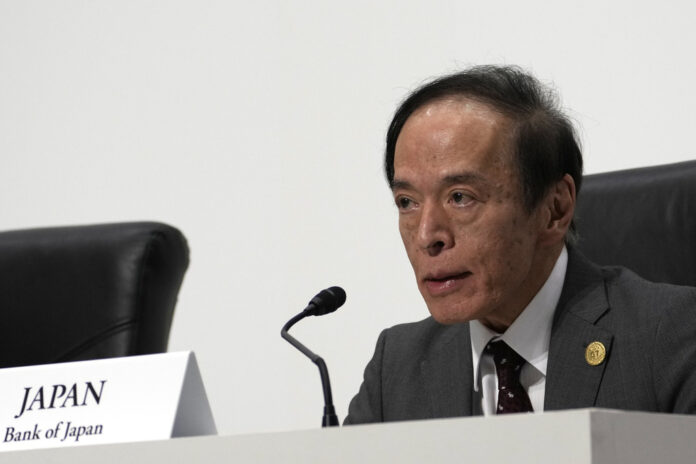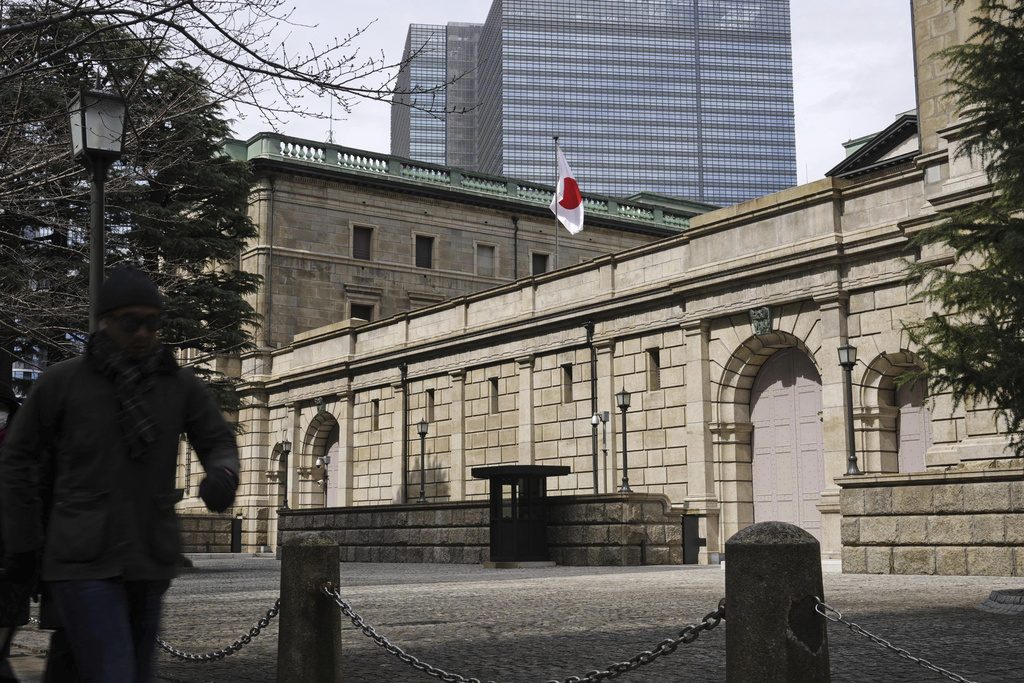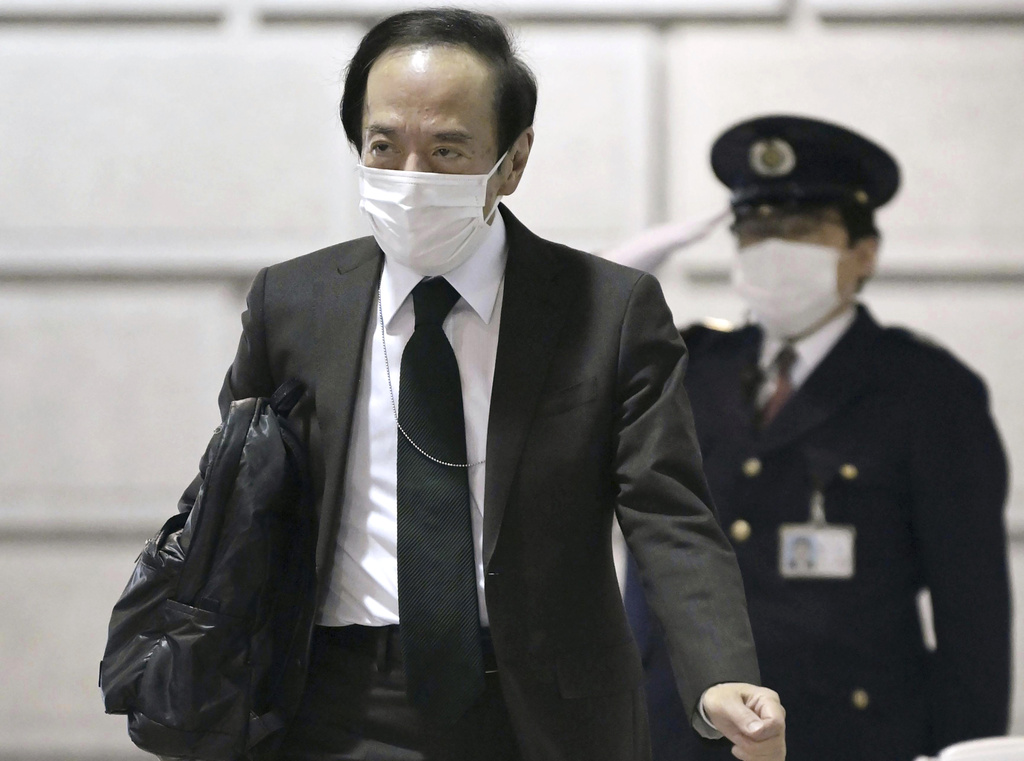
TOKYO – The Bank of Japan on Tuesday scrapped its negative interest rate policy in its first rate hike in 17 years, overhauling the central bank’s unprecedented monetary easing framework of the past decade that aimed to end deflation.
The BOJ decided at a two-day meeting to guide short-term interest rates within a range of zero and 0.1 percent, judging that its goal of attaining stable 2 percent inflation is “in sight.”
The symbolic move signals that the dovish BOJ is gravitating toward policy normalization that analysts still expect to be slow at best, with the central bank saying financial conditions will remain “accommodative.”
The decision was not unanimous, with two of the nine board members opposed.

The departure from the negative rate policy means higher borrowing costs for companies and households but a boost in the profitability of commercial banks and other financial institutions.
Since 2016, the BOJ has set short-term interest rates at minus 0.1 percent, making it less attractive for financial institutions to leave excess funds at the central bank. The goal was to prompt commercial banks to increase lending and investment in order to rejuvenate the economy.
The Policy Board also decided to scrap its yield cap program, under which long-term interest rates have been at extremely low levels, and end its purchases of assets such as exchange-traded funds.
“It came into sight that the price stability target of 2 percent would be achieved in a sustainable and stable manner,” the BOJ said in a post-meeting statement.
The monetary easing framework, which involved a negative rate and yield curve control program, has “fulfilled” its role, the bank said.
Despite the removal of the yield cap, the central bank will continue to buy long-term Japanese government bonds in “broadly the same quantities as before” when bond yields rise sharply.
While cost-push inflation may be a major factor in accelerating wage growth, it is viewed as a critical development for Japan to ensure a virtuous cycle of pay and price hikes.

The BOJ expects the Japanese economy to continue to recover moderately, though economists point to weak domestic demand, especially private consumption. Japanese firms have robust capital investment plans and the focus is on whether they will materialize.
Heading into the latest policy meeting, BOJ board members have sounded more confident about the probability of achieving 2 percent inflation, supported by wage growth.
The preliminary reading of a 5.28 percent pay hike offered by Japanese firms on average during this year’s labor-management negotiations has apparently boosted hopes for a virtuous cycle of pay and price increases. The pace is the fastest in over three decades.
BOJ chief Kazuo Ueda had indicated that the negative rate policy and yield control program would be reviewed when the inflation goal came into view. Still, he shot down expectations that the central bank would raise rates rapidly, saying financial conditions will remain accommodative.
Ueda is scheduled to hold a press conference later in the day. The governor’s remarks will be scrutinized for any clues about future policy changes, which would also impact financial markets.
The BOJ’s persistence with ultralow rates sharply weakened the yen as its global counterparts rushed to raise rates to fight surging inflation.
The yen fell against the U.S. dollar shortly after the BOJ’s decision. A weak yen cuts both ways, as it boosts import costs for resource-scarce Japan but can be a boon to exporters by inflating their overseas earnings in yen terms.
Market participants also pay close attention to the outlook for U.S. monetary policy. The Federal Reserve is scheduled to hold a two-day policy-setting meeting starting Tuesday, and analysts expect it to end its aggressive monetary tightening to fight soaring inflation and start cutting rates sometime this year.















































